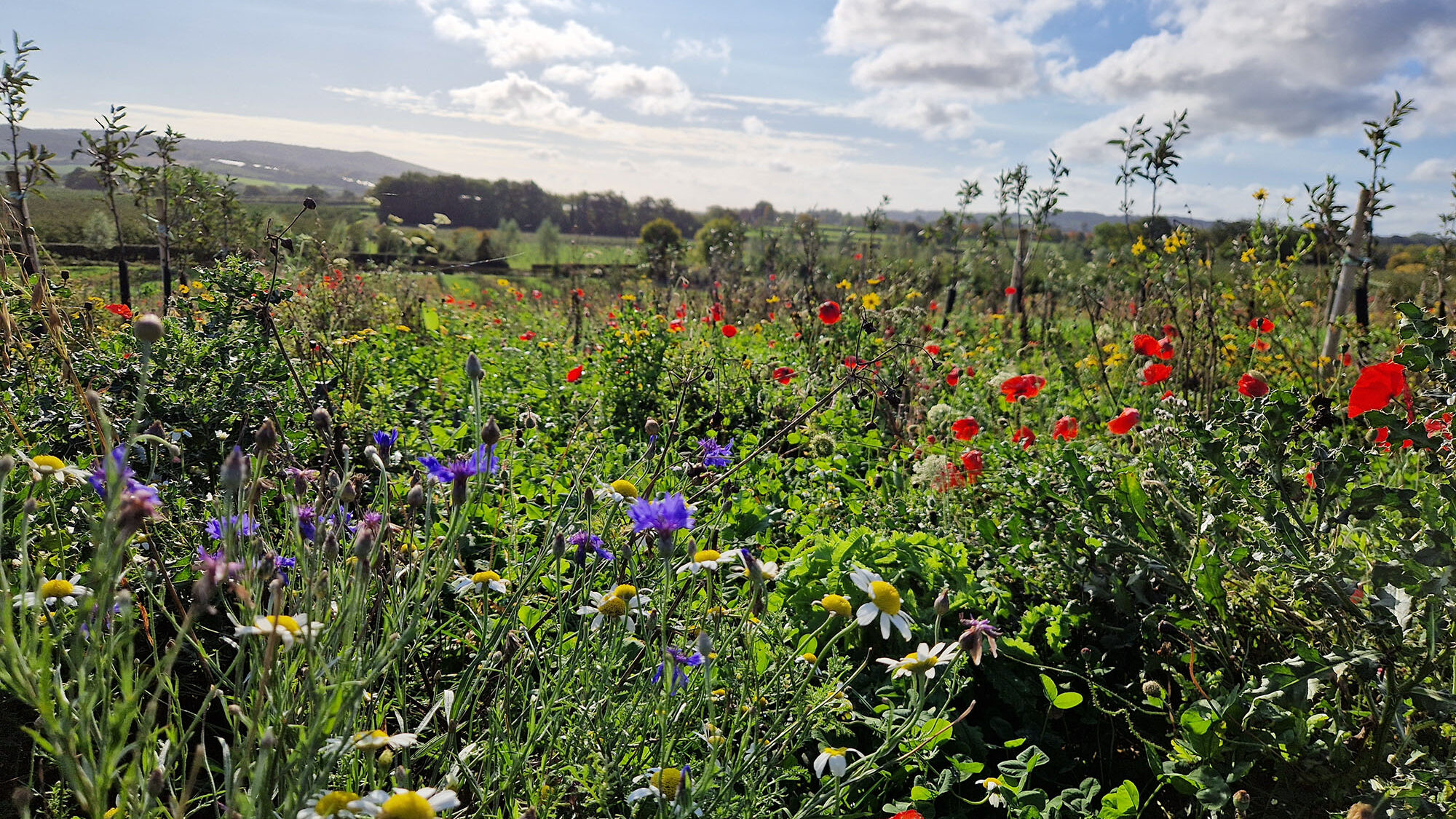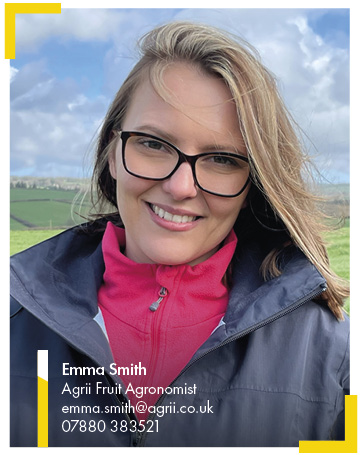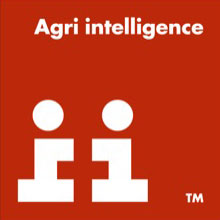
Emma Smith, an Agrii agronomist specialising in fruit production, explains why the Sustainable Farming Incentive is an easy win for vineyards and other horticulture businesses.

Like many horticultural businesses, Vineyards are well-placed to capitalise on the Sustainable Farming Incentive (SFI). It does not offer payments on a scale with those of the Basic Payment Scheme (BPS), but as L. P. Hartley wrote in his society novel, The Go-Between, “The past is a foreign country; they do things differently there“. Instead, the SFI offers payments for actions that many consider good farming practices, including soil organic matter tests, integrated pest management (IPM) plans and variable rate application.
IPM is already widely practised by many businesses, but it has gained prominence since becoming a condition of the SFI. Including an IPM Plan with your SFI application is worth about £1,200, making it a worthwhile exercise.
With every plan, it is important to reflect and review, and for IPM, this is not just good practice but a statutory requirement. Your records will need to demonstrate evidence of a review with consideration given to what worked well and what could be done better to deliver an IPM strategy fit for future seasons. Your Agrii BASIS registered agronomist can help or fully undertake this for you.
Easy wins
Landscape features such as hedgerows, ditches and watercourses are often seen as an asset to vineyards, not the encumbrance they can be on a broadacre arable farm. As a result, many businesses actively manage these assets because they are intrinsic to supporting the biodiversity needed to deliver a healthy environment.
The hedgerow actions (HRW1, HRW2 and HRW3) offer payment for doing what, in many cases, is already being done to protect vines from harsh weather and as part of an IPM plan. Where more labour-intensive management is required, such as hedgerow laying (BN5), coppicing (BN7) or gapping up (BN7), there are capital grants available to help with the cost. The buffer strip action AHL4 pays for 4-metre or 12-metre grass strips to provide a habitat for wildlife, prevent pollution from leaching and support the broader objectives of an IPM plan. The wildlife actions are equally appealing, with options for pollen and nectar mixes (AHL1), winter bird food (AHL2) and grassy field corners and blocks (AHL3).
As with much of the SFI, being paid to maintain landscape features, sow seed mixtures that support birds and mammals or establish cover crop strips between rows of vines are easy wins for the land manager. It’s not onerous or complex, and it is designed to work alongside the farm’s core activities. Many agreements have a variable period of commitment (one to three years), and some are movable, meaning they can be delivered on the same area of eligible land or rotated as desired.
Some actions, such as cover crops and wildflower strips, require a little more consideration, mainly around the species mix. The good news is much of the thinking has already been done for you.
The Agrii Viti Master Mix, for example, is a specialist cover crop mixture that was developed in partnership with a vineyard customer near Cirencester. It is designed to be both practical and agronomically suited to UK vineyards. The blend contains a high proportion of dense grasses that give excellent ground cover and outcompete most weeds while providing good traction for vehicles.
The broadleaved plants provide an array of flowers all season – producing pollen and nectar for pollinating insects and beneficial predators. Including complementary nitrogenfixing species (red clover, white clover, bird’sfoot trefoil) helps support the mix and ensures it has the nitrogen to meet its needs through the season.
While equally rewarding, other actions, such as soil and nutrient management plans, need to be demonstrated as a report produced by a suitably qualified person such as a FACTS registered adviser. Again, much of the hard work has been done for you. Agrii’s team of FACTS-qualified crop input specialists and agronomists are trained in the finer details of a nutrient management plan. They will be able to balance the use of bagged fertiliser with lime, soil-applied iron, organic soil improvers and novel micronutrient products.
RHIZA, Agrii’s precision farming service, can produce the variable rate data files and work plans needed to fulfil the PRF1 action while also saving the grower unnecessary expense by ensuring only what is required is applied (see ‘Living up to the SFI and its actions’).



